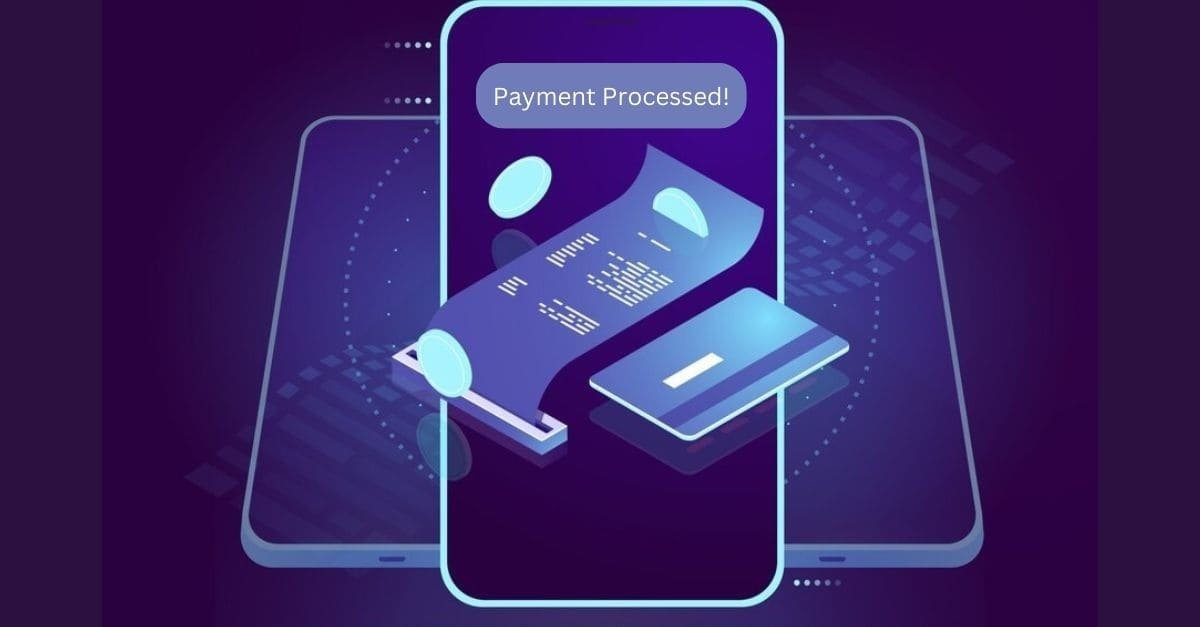
Have you ever heard of virtual credit card payments? These well-designed tools offer extra security and convenience to both you and your customers. They work just like regular credit cards but with a unique, temporary number for each transaction. Customers can shop for peace of mind, knowing their card details are never shared. As a business owner, accepting virtual credit cards can open doors to a broader customer base and simplify payment processing.
This guide is your one-stop shop for understanding “How to accept virtual credit card payments.” We’ll break down the different ways you can accept them, explain their benefits, and even address any potential challenges you might face. By the end of this article, you’ll be all set to join the growing trend of accepting virtual payments and taking your customer experience to the next level.
Table of Contents
Why accepting virtual credit card payments is essential for businesses
In today’s fast-paced digital world, accepting virtual credit card payments is crucial for companies of all sizes. Whether you run a small online store or a bustling brick-and-mortar business, virtual credit card payments can revolutionize how you collect money from your customers.
One of the primary reasons why accepting virtual credit card payments is essential is the rise of online shopping and contactless transactions. Customers now expect a seamless and secure payment experience, and virtual credit card payments provide just that. By offering this convenient payment method, you can cater to the needs of your tech-savvy customers and stay ahead of the competition.
Furthermore, accepting virtual credit card payments can significantly reduce your business’s fraud risk. Encryption of virtual credit card transactions greatly hinders fraudsters from accessing your customers’ sensitive information, unlike traditional credit card payments. This increased security protects your customers and helps build trust and credibility for your business.
Lastly, virtual credit card payments can improve your cash flow by streamlining the payment process. With traditional payment methods, there is often a delay between the customer making a purchase and the funds being deposited into your account. However, virtual credit card payments are processed instantly, allowing you to access your money more quickly and efficiently.
What are virtual credit card payments?
Before diving into the benefits and intricacies of virtual credit card payments, let’s first understand what they are. In simple terms, virtual credit card payments are a payment method where the customer’s credit card information is stored electronically and used for online or contactless transactions.
Virtual credit card payments are typically made through a payment gateway, which acts as a bridge between your business and the customer’s credit card issuer. When a customer purchases using a virtual credit card, the payment gateway securely processes the transaction and transfers the funds to your business account.
It’s important to note that virtual credit card payments are not on physical cards. Instead, they are virtual representations of the customer’s credit card information, including the card number, expiration date, and CVV code. This information is securely stored within the payment gateway, eliminating the need for manual input during each transaction.
How do online card payments work?
Generation: Virtual credit cards are generated by banks or payment companies. These are electronic versions of physical cards containing all the necessary card details.
Issuance: These virtual cards are issued to individuals or businesses through secure online platforms. The card information is usually sent via email or through a dedicated mobile app.
Usage: Virtual cardholders can use digital card information to make payments online, similar to a physical credit card. They must enter the card number, expiration date, and security code when purchasing.
Authentication: To ensure secure transactions, virtual cards often require an additional layer of authentication, such as a one-time password (OTP) sent to the user’s mobile or email. This will help verify the identity of the cardholder.
Expiration: Virtual cards typically have an expiration date, after which they can no longer be used. This is a safety measure to mitigate the risk of unauthorized access to virtual card details.
Benefits of accepting virtual credit card payments
Now that we better understand virtual credit card payments let’s explore the incredible benefits they offer for businesses.
- Reduced fraud risks: As mentioned earlier, virtual credit card payments are highly secure, significantly reducing the risk of fraud for your business. Using encrypted technology and tokenization, virtual credit card payments make it incredibly difficult for fraudsters to access or misuse your customers’ credit card information.
- Increased customer trust: When customers know their payment information is safe and secure, they are more likely to trust your business. By accepting virtual credit card payments, you can build a reputation for being a trustworthy and reliable merchant, attracting more customers and encouraging repeat business.
- Improved cash flow: Virtual credit card payments offer instant processing, allowing you to access your funds quickly and efficiently. This improved cash flow can help you manage your finances more effectively, pay suppliers on time, and reinvest in your business growth.
- Convenience and flexibility: Virtual credit card payments provide customers with a convenient and flexible payment option. Whether shopping online or making a contactless in-store purchase, virtual credit card payments offer a seamless and hassle-free experience, enhancing customer satisfaction and loyalty.
- Global reach: Accepting virtual credit card payments opens up opportunities for your business to reach customers beyond your local market. With the ability to accept payments from customers worldwide, you can expand your customer base and tap into new markets, driving growth and profitability.
Virtual credit card payment providers
When accepting virtual credit card payments, choosing the right payment provider for your business is essential—several reputable virtual credit card payment providers in the market offer unique features and pricing structures.
- PayPal: PayPal is a widely recognized and trusted payment provider that offers virtual credit card payment solutions for businesses of all sizes. With its user-friendly interface and extensive global reach, PayPal can be an excellent option for companies accepting virtual credit card payments.
- Stripe: Stripe is a popular payment provider that offers various solutions, including virtual credit card payments. With its robust security features and developer-friendly platform, Stripe is preferred by many businesses, especially those with more complex payment integration needs.
- Square: Square is known for its point-of-sale solutions but also offers virtual credit card payment options. With its sleek hardware and user-friendly software, Square can be an excellent choice for businesses looking to accept virtual credit card payments in-store.
When selecting a virtual credit card payment provider, consider factors such as transaction fees, security measures, integration capabilities, customer support, and the specific needs of your business. It’s also advisable to read reviews and compare features to ensure you make an informed decision.
Recommended article: Can you Use Student Loans to Pay off Credit Cards?
Setting up virtual credit card payments for your business
Setting up virtual payments for your business involves a few crucial steps. Let’s walk you through the process to help you get started with confidence.
- Choose a payment provider. As mentioned earlier, selecting the right payment provider is critical. Evaluate your business needs, compare features and pricing, and choose a payment provider that meets your requirements.
- Create an account: Once you have chosen your payment provider, you must create one. This usually involves providing essential business information and agreeing to the terms and conditions.
- Integrate your payment gateway: To accept these payments, you’ll need to integrate the payment gateway provided by your chosen payment provider into your website or online store. Depending on the platform you use, this integration process may vary.
- Configure payment settings: You can access various settings and configurations within your provider’s dashboard. Set up your preferred payment options, such as currency, accepted credit cards, and any additional security measures you want to implement.
- Test transactions: Before going live with these payments, it’s crucial to test the payment process to ensure everything is working correctly. Making a few test transactions using different credit cards is essential to ensuring that payments are processed and funds are deposited correctly into your account.
- Communicate with customers: Once these payments are up and running, communicate this new payment option to your customers. Update your website, email newsletters, and social media channels to let your audience know they can pay using virtual credit cards.
Setting up virtual credit card payments may require technical knowledge, especially during integration. If you are unfamiliar with web development or online store management, consider seeking assistance from a professional or consulting with your payment provider’s support team.
Virtual credit card payment security measures
Security should always be a top priority when accepting virtual credit card payments.
- PCI compliance: Ensure that your business meets the requirements of the Payment Card Industry Data Security Standard (PCI DSS). This standard helps protect cardholder data and prevent data breaches.
- Tokenization: Implement tokenization, which replaces sensitive credit card information with unique tokens. This process ensures it is never stored or transmitted in its original form to secure customer data further.
- Two-factor authentication: Consider implementing two-factor authentication for additional security. This requires customers to provide a second verification form, such as a unique code sent to their mobile device, before completing a transaction.
- Regular Security Audits: Conduct regular security audits to identify any vulnerabilities in your payment system. Using this, you can stay one step ahead of potential threats and ensure your customers’ data is always protected.
Remember, maintaining a secure payment environment protects your customers and helps avoid costly data breaches and reputational damage.
Processing fees
When accepting virtual credit card payments, it’s essential to understand the processing fees associated with this payment method. Payment providers typically charge a percentage fee per transaction and a small fixed fee. The exact fees can vary depending on the provider and your business type.
The sentence is already in active voice. It clearly states that considering these fees is crucial when setting your product or service prices. Compare the fees charged by different payment providers. Also, consider their additional features and support to find the best balance between cost and value.
Integrating virtual credit card payments into your website or online store
Integrating virtual credit card payments into your website or online store is straightforward, mainly if you use popular e-commerce platforms like Shopify, WooCommerce, or Magento. These platforms often have built-in integrations with payment providers, making setting up virtual credit card payments easy.
If you have a custom-built website or use a less common e-commerce platform, you may need to work with a developer to integrate the payment gateway properly. Your payment provider should provide detailed documentation and support to assist you and your developer throughout the integration process.
Once the integration is complete, thoroughly test the payment process. This test will ensure that it functions correctly and provides a seamless experience for your customers.
Virtual credit card payment alternatives
While these payments offer numerous benefits, you must know about alternative payment methods. These methods may better suit your business or customer preferences.
- Mobile payments: With the rise of smartphones, mobile payment solutions such as Apple Pay, Google Pay, and Samsung Pay have gained popularity. These payment methods allow customers to make purchases using mobile devices, providing a convenient and secure payment experience.
- Cryptocurrencies: Some businesses are starting to accept cryptocurrencies like Bitcoin or Ethereum as payment. Cryptocurrencies offer fast, secure, and borderless transactions, although they may not suit all business types.
- E-wallets: E-wallets like PayPal, Venmo, or Alipay are becoming increasingly popular, especially for online purchases. These digital wallets allow customers to store payment information. It helps you make quick payments without entering credit card details for each transaction.
It’s essential to assess your target audience and understand their payment preferences before deciding what payment methods to offer. You can cater to a broader range of customers and enhance their shopping experience by providing various options.
Conclusion
In conclusion, accepting virtual credit card payments has become essential to running a successful business in today’s digital age. By following the steps outlined in this guide, you can quickly begin accepting these payments. You will also reap the benefits of improved cash flow, increased customer satisfaction, and enhanced security.
It is essential to stay up-to-date with the latest advancements in virtual credit card payment technology. This will help ensure smooth and efficient transactions for you and your customers. Additionally, prioritize security measures to protect your business and customers’ sensitive information.
FAQs: How to Accept Virtual Credit Card Payments?
Can I accept virtual credit card payments?
Most likely, yes. Since virtual cards function similarly to regular credit cards, any system that accepts traditional credit card payments should also accept virtual cards.
How do I know if a customer is using a virtual card?
There’s no way to distinguish a virtual card from a regular one during the transaction process. Both will appear as regular credit card payments on your end.
What do I need to do to accept virtual credit cards?
You don’t need any special equipment or adjustments to accept virtual cards. As long as your existing system accepts regular credit cards, you’re all set.
Are there any fees associated with accepting virtual cards?
The fees for processing virtual card payments are typically the same as those for regular credit card transactions. However, checking with your payment processor for specific details and potential variations is always recommended.
Are there any benefits to accepting virtual cards?
- Enhanced security: Virtual cards often come with additional security features, such as one-time use numbers, which can help minimize fraud.
- Improved control: Businesses can issue virtual cards with specific spending limits and expiry dates, offering greater control over expenses.
- Streamlined reconciliation: Virtual cards can simplify record-keeping and reconciliation by providing clear digital trails for each transaction.






